Over the years I’ve found airport lounges to be a great place for taking stock after a trip. After three days attending VieVinum 2024, the Austrian Airlines lounge at Vienna Airport proved my point.
“Damn, that stuff tastes great,” enthused one guest still wearing his VieVinum lanyard and clutching a bottle of Austrian Sekt, as his colleague chugged down the actually pretty decent Gruner Veltliner alongside it. “Not too dry, good body and structure… and this is a cheapie.”
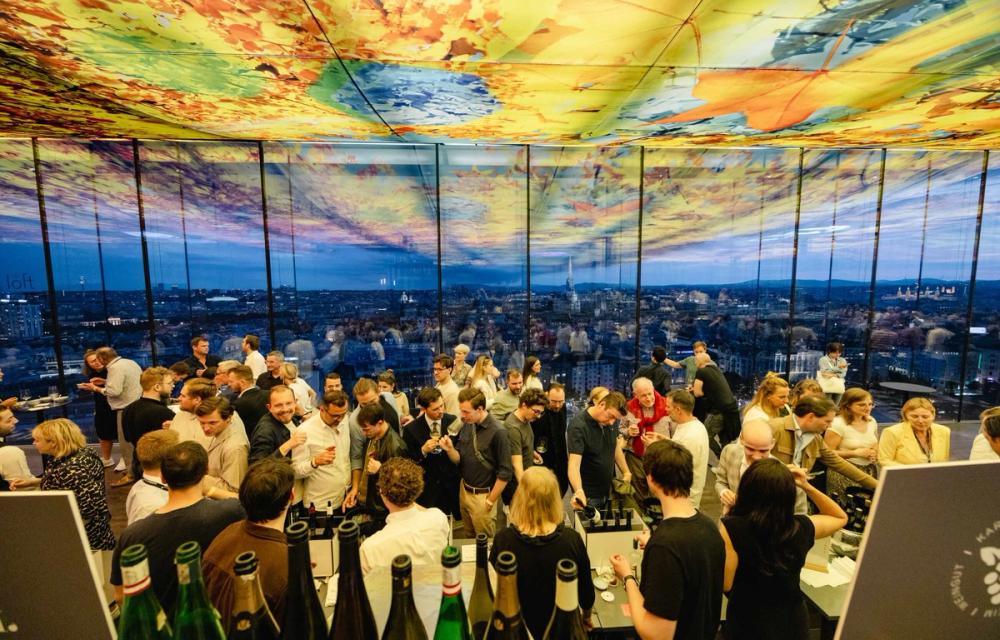
Wine On Top was a highlight of Day 2 at VieVinum 2024 where 400 delegates tasted new vintages overlooking the skyline of Vienna
A growing confidence
Austrian Sekt certainly had its moment in the sun at this year’s VieVinum - more on that later. But what struck me most about this year’s event - having not been for a few years - was how much it demonstrated the confidence of Austria’s wine industry. This was an absolutely packed event - over 1200 invited visitors from almost 60 countries and what felt like another 2000 each day after noon, when the three-day event throws open its doors to the paying public.
The Hofburg Palace in central Vienna is one of the largest buildings in Europe, its endless rooms and halls home to the Habsburg monarchy for hundreds of years until its collapse in 1918. But somehow even it felt challenged in hosting such a vast event with over 550 producers from across Austria and beyond, almost 200 more than at the last VieVinum in 2022 and many more than at the first, back in 1998.
This also felt like a much more international event than when I was last here – one of the first stands I saw was GD Varja from Barolo, whilst close by were Domaine Skouras, Kechris and Tselepos Estate and others from Greece. And elsewhere.
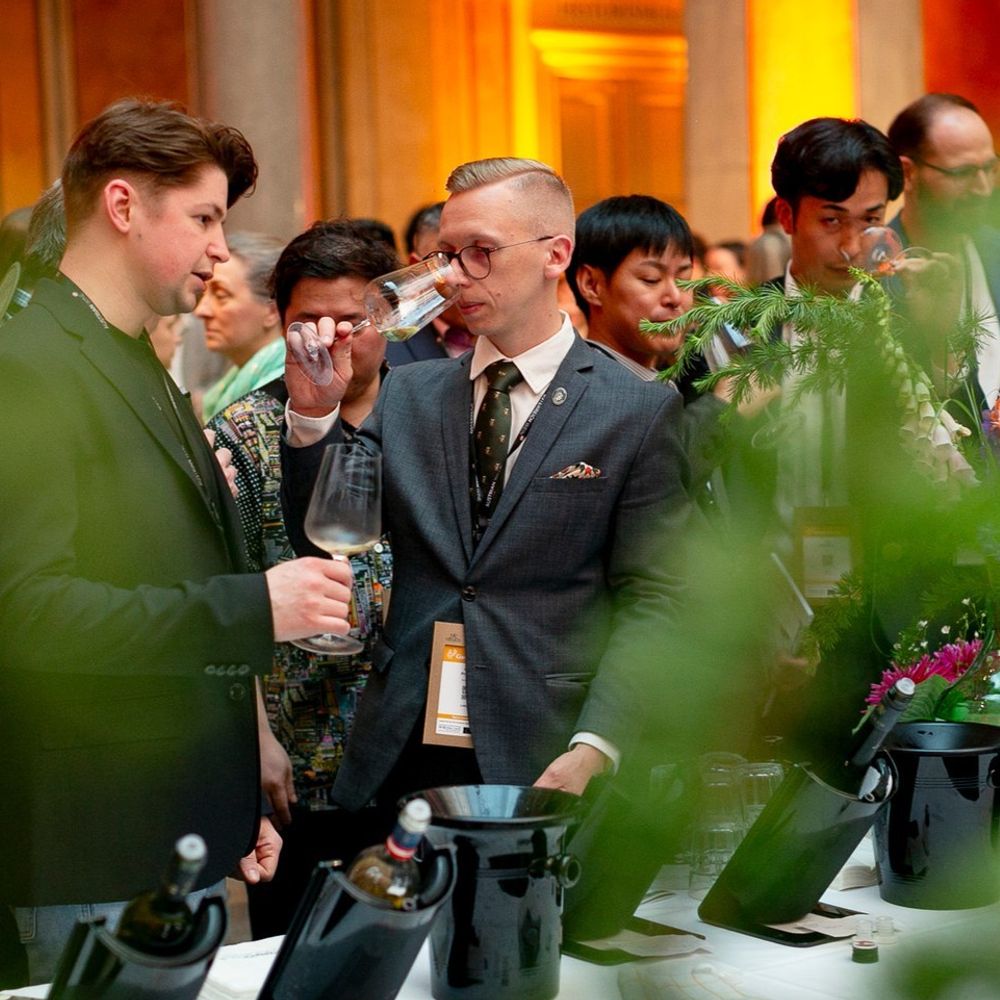
Amongst attendees there was a noticeable increase in visitors from Asia
Internationalism was also evident in the masterclasses being offered; alongside sessions focused on Grüner Veltiner in Times of Global Warming, 2015 and 2019 Carnutum Matured (very much the “in” red wine region at this event), Sytrian Sauvignon Blanc and Thermenregion’s Pinot Noir and Zierfandler were sessions on Greek wine, Burgundy and 2019 Brunello.
Amongst the huge number of visitors the proportion from Asia was notable, potentially good news for Austrian wine exports which have historically been focused on Europe and North America, markets that are probably nearing saturation. Chris Yorke, Austrian Wine CEO admitted that times are hard for many Austrian producers, facing declines in consumption, like everywhere else.
“Exports are very important for our winemakers because we have few growth opportunities left in the Austrian market,” explains Yorke. “Every bottle exported promotes our excellent wines on the international stage and also relieves pressure on the domestic market.”

"In Grüner’s slipstream there is a huge diversity of other varieties and wine styles" : Chris Yorke, Austrian Wine CEO
The size of the turnout should give him ground for optimism, showing how strong global interest in Austrian wine has become, following years of qualitative advances. With consumers turning away from the meaty wines that are still the forte of places like Australia, this is Austria’s chance to shine with its mineral whites and mid-weight, fruity reds made from Zweigelt and Blaufränkisch.
And indeed, the most important thing about this event will be that it will almost certainly contribute to a further boost in wine exports, which have risen seven-fold over the past 25 years to reach €238m in 2023, although growth was marginal last year due to a pronounced drop in bulk wine exports.
The sector has come a long way, however, with the regulatory changes of recent years - notably the DAC system protecting regional typicality and establishing a quality pyramid, which was launched in 2003 in Wienviertel and completed last year in Thermenregion – all of which reinforce the image of Austrian wine as a quality product.
But the main event really has been the increase in the variety of wines, alongside the rise in organic and biodynamic viticulture.
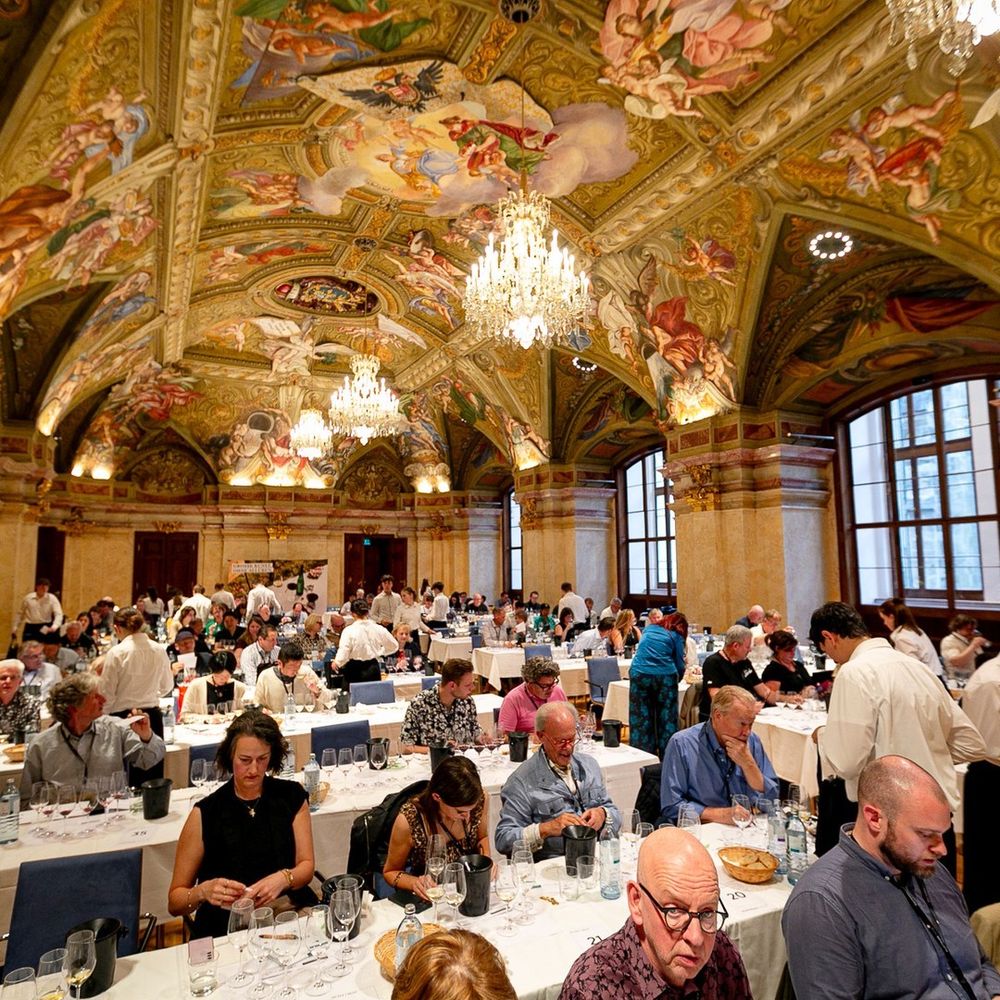
International Heroes and Rising Stars was a mammoth tasting that demonstrated Austrian wine's growing diversity
These were on show at a comprehensive flight tasting at the impressive Palais Niederosterreich, just down from the Hofburg on the first evening. Entitled International Heroes and Rising Stars, it sought to highlight established and lesser-known producers through 18 flights of six wines.
This was a tasting which showed Austria’s growing diversity: from Wachau along the Danube, it took you through multifaceted Kremstal; looked closely at 2021 (a tremendous year for Grüner); at ‘volcanic wines’; Chardonnay (or to give its local name, Morillon); Sauvignon Blanc from Sudsteiermark; ‘Gemischter Satz and Cuvees’; and with reds, 'How St Laurent meets Zweigelt'; 'A Journey Through Burgenland Blaufränkisch'; and a close look at 2019, one of the best recent vintages for reds and whites.
Some of these flights were truly fascinating including World Famous in Austria, which showcased Welschriesling, Furmint, Neuberger, Rotgipfler and Zierfandler, the last two from Thermenregion, the go-to DAC for unusual styles and varieties.
Chris Yorke says Austria’s growing diversity is key to its future and confirms that although Grüner Veltliner accounts for over one third of plantings, it is far from being a one trick pony.
“Obviously Grüner is the first variety that people get to know. But – and this is a big but – in Grüner’s slipstream there is a huge diversity of other varieties and wine styles that people can discover. Like Riesling, Sauvignon or Pinot Blanc, indigenous treasures like Roter Veltliner, Zierfandler (which has nothing to do with Zinfandel!) or Gemischter Satz, our fantastic reds like Zweigelt, Blaufränkisch or St. Laurent – and on top our world-class sweet wines and Sekts (sparkling wines) that are evolving hugely. These varieties are not only deeply rooted in Austria’s soils, but also in the hearts of our winemakers.”
But he says there are other drivers too.
“Quality – at all price points. You simply cannot make a mistake when buying an Austrian wine. Then, there is the unique freshness of our wines – from Grüner Veltliner to Blaufränkisch that makes them very appealing and also widely suitable for food pairing. And third, Austria is known for its high share of environmentally conscious wine production – be it organic, biodynamic or certified sustainable.”
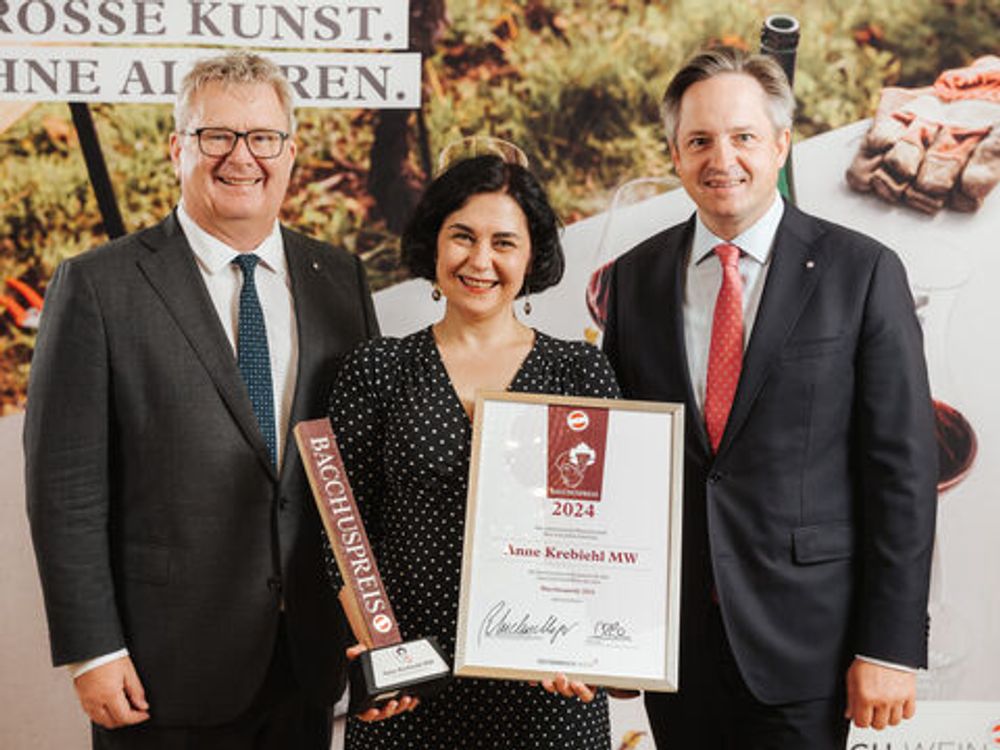
Longtime Buyer contributor Anne Krebiehl MW was presented with an award to honour her contribution to Austrian wine
And how does the future look?
I asked Yorke whether the next step is doing more to spread awareness of Austria’s wine regions.
“True, some are still to be discovered on a bigger scale but we should not forget that only last year we completed our “DAC circle” with the Thermenregion. Now all our regions define and protect their typical wines through the DAC system,” he says.
“Together with our vintners we will continue to promote and raise awareness of our regions and their excellent wines. I think you could see this as a gift to the wine world: Wouldn’t it be boring if you already knew everything about our wines? There is so much to discover – and we are more than happy to take people on our Austrian wine journey.”
Rule changes for Austrian Sekt
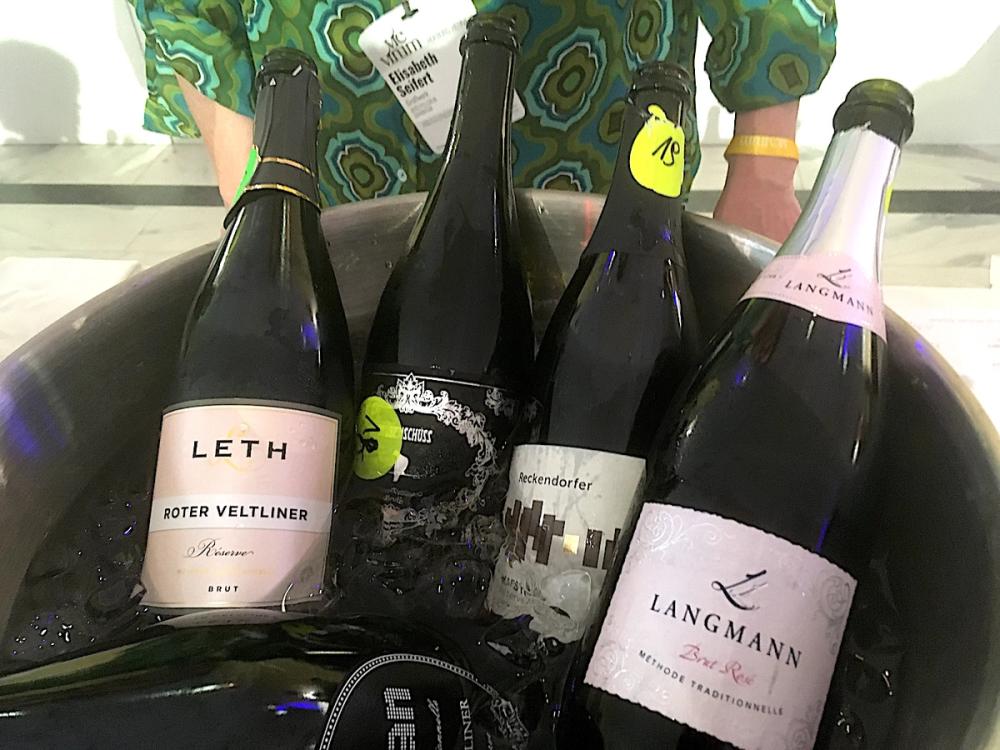
Just some of the Austrian Sekt that caught Keay's eye
My personal wine journey this year took me back to the Hofburg Palace where the main entrance hall was devoted to Austrian Sekt. Not long ago, this wine style really wasn’t a thing – Austrian sparkling wine seemed to live in the shadow of its German neighbour and was dominated by one very big producer, Schlumberger.
Things started to change when the Austrian Sekt Committee established new rules for its production back in 2015. Last year saw the formal introduction of a three-tier quality pyramid, Sekt Austria, Sekt Austria Reserve and Sekt Austria Grosse Reserve, which require at least three years ageing.
Unusually, the liberal new rules – aimed at emphasising the Austrian-ness of the country’s sparkling offering - allow both the Champagne and Charmat method at the Sekt Austria level (traditional method only for the next two tiers) with wines made from 40 approved varieties, including the traditional Burgundian ones, but also a wide range of Austrian varieties including obscure ones and hybrids.
The result was some truly fascinating wines on show here – I have highlighted just those wines made from the less expected varieties.
At the Sekt Austria level, two Gelber Muskateller sparklers stood out, Weingut Tschermonegg’s Brut Sekt 2022 and Weingut Leitner’s Brut Sekt 2022, both very moreish and fruity, with a great mouthfeel and considerable length, and both from Steiermark; Weingut Wien Cobenzl’s Sekt Austria Brut Rose 2021 from 100% Zweigelt, Ezherzog Johann Weine’s Sekt Austria Brut Welschriesling 2021 was also showing well though with a little more residual sugar, whilst Weingut Frauwallner Straden’s Sekt Austria Brut Rose 2022 (also Steiermark) was delicious, with suggestions of wild strawberry and spice – made with 90% Blauer Zweigelt and 10% Blauer Wildbacher.
Amongst the Reserve and Grosse Reserve wines there was almost too much good stuff to single out just a few but in the Reserve category Weingut Langman’s exotic and fruit-charged Reserve Brut Rose NV from 100% Blauer Wildbacher deserves mention, as do Weingut Leth’s Reserve Brut Roter Veltliner 2019 from Niederosterreich (the extra age giving a lovely toasty complexity to the wine) and Weinhof Josef Scharl Charakterweine’s Reserve Brut Souvignier Gris 2020, made from a hybrid grape.
In the Grosse Reserve category, it was notable that producers were using more Burgundian varieties, alongside Grüner, but again there were some unusual and distinctive exceptions, amongst them Weingut Esterhazy’s Reserve Brut Blanc de Noirs 2019 from Burgenland, zero dosage made with 100% Blaufränkisch – very broad palate, suggestions of forest fruit supported by firm acidity – and one of my favourites of the whole tasting, Weingut Johannes Gebeshuber’s Grosse Reserve Extra Brut Zierfandler 2018, deliciously rich, saline and with great length (again Niederosterreich).
Unsurprisingly perhaps, sales of Austrian Sekt have been rising in Austria and exports were up 20% two years ago, although the export value of Austrian semi-sparkling and sparkling overall were both considerably down last year.
With such a dazzling variety of style like those I tasted I have every confidence that this picture will be reversed next year.
With my flight delayed by half an hour I joined my increasingly noisy friends at the Austrian Airlines lounge. They were right – the Sekt – made from 100% Gruner - was damn good stuff. And inexpensive, at around €13 a bottle.
As Austrian Wine continues its journey abroad, and continues to diversify, expect Austrian Sekt – hitherto almost invisible in markets like the UK – to be its next big thing.
Move over Prosecco, there’s a new kid in town.
Austrian Wine is a commercial partner of The Buyer. To discover more about them click here.
































